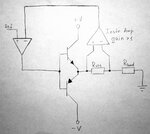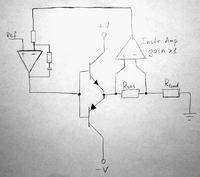Foyevtsov
Newbie level 4
Hi, analog guys 
I am working on some schematics and came to the point where I am getting troubles, which I don't know how to to explain/deal with. I believed that the following scheme (see the picture) should work. Should it? If no, then why, if yes, then what should be a stupid mistake it doesn't? (I mean the most stupid mistakes, like wrong connections, I've already checked).
P.S. If some other details are needed, just tell.

I am working on some schematics and came to the point where I am getting troubles, which I don't know how to to explain/deal with. I believed that the following scheme (see the picture) should work. Should it? If no, then why, if yes, then what should be a stupid mistake it doesn't? (I mean the most stupid mistakes, like wrong connections, I've already checked).
P.S. If some other details are needed, just tell.

